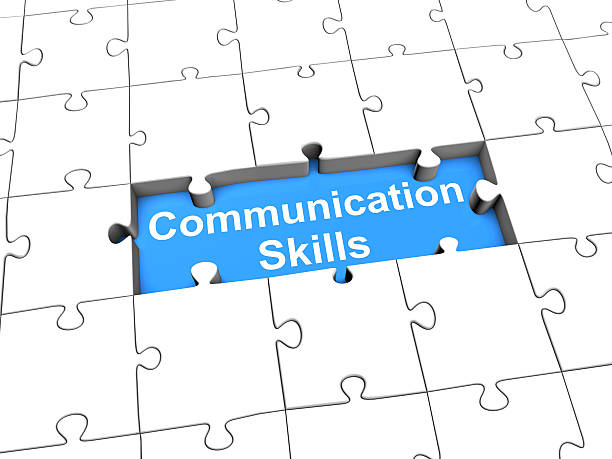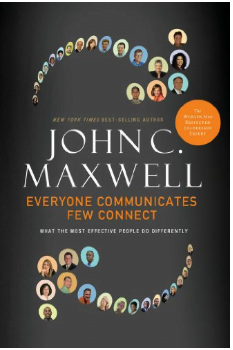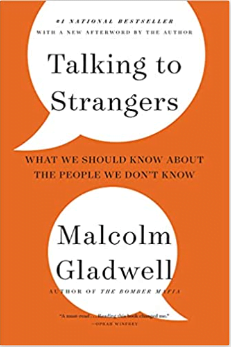This is the most common question that many people have asked so many times. Developing communication skills can help all aspects of your life, this is something that most people ignore and fail to develop.
Nowadays, especially for growing businesses on digital platforms, in a fast-paced work environment, you can’t ignore communication skills. Without it in the workplace, any business will simply slow down. There’s nothing worse than miscommunication between the individual employee and the entire department that causes complete confusion, frustration, lack of progress, missed deadlines, and quite possibly employee who decides to leave.
In the following article, you will get all that you need to know about communication skills and their importance.
Related:
- 120 Powerful Affirmations for Communication to Get Success
- 120 Positive Affirmations for Career Success & Growth
- 125 Powerful Affirmations for Public Speaking: Win the Room
Table of Contents
- What are communication skills?
- Importance of Communication Skills
- Types of Communication Skills
- Definition of Interpersonal Communication
- 7 C’s of Communication Skill
- 5 Types of Communication Styles
- 9 Tips to Improve Your Communication Skills
- Quotes on Communication Skills
- Best Books on Communication Skills
What are communication skills?
Reading, writing, speaking, and listening are the four types of communication. We are filled with our rightness, our autobiography. We want to be understood, our conversations become collective monologues, and we never understand what’s going on inside other people. Communication happens both ways. Empathic communication skills are the abilities that help you to pass information to other people and to understand what is said to you. It is the most important skill for your professional and personal life.
Related: Professional Development Plan: 7 Ways to Prosper It
Why are Communication Skills important?
As mentioned above, communication skills play a significant impact in all aspects of life. The type of communication may change along with the phase of life, but the importance does not decline.
1. Communication Skills in Business & Organization
Businesses and organizations are places where communication skills are most important. Digital marketing, advertising, and sales are the fields that need to be communication skills. it helps not only get new customers but also assists you to retain them and make loyal customers, most of the profits come from old customers. Most businesses and organizations have gotten in trouble without it and spend money to hire the best communication creators.
2. Communication Skills in the Workplace

With strong communication, you can impact your workplace. Well-communicators are the ones who find solutions, negotiate, drive change, and motivate and inspire their colleagues.
By improving communication skills, you can build good relations and affinity with all your fellow employees, teamwork, decision-making, and interdepartmental communication in the workplace.
Build yourself as a leader which will bring new opportunities to promote, flourish, and get regard from your colleagues and bosses.
Related: Negotiation: 8 Simplest Ways Can Make You Successful
3. Communication skills in Life
In your life, good communication skills will ensure everyone around you understands you and you also appreciate them. But with poor communication, you will rarely have to face issues and misunderstandings.
It will help you to make and keep friends, and good relationships with your spouse, kids, and family members. You want to discuss plans for the holidays or ensure that your children are well and happy. With it, you will feel less stress because poor communication also leads to a lot of mental stress.
How Many Types of Communication Skills?
Communication can be categorized into various types based on different factors. Here are some common types of communication:
Verbal Communication- Verbal communication involves speaking out loud with one person or a group of people. It can occur in various contexts, such as face-to-face conversations, phone calls, speeches, presentations, meetings, or even across distances using technology like Zoom or video calls.
the choice of language and the clarity of pronunciation and enunciation are the most important. It’s crucial to speak in a language that the listener understands words clearly to minimize misunderstandings.
Non-verbal Communication- Nonverbal communication is without relying on spoken or written words. It involves the use of body language, facial expressions, gestures, eye contact, posture, tone of voice, and even the use of symbols or signs. It plays a significant role in enhancing the understanding and impact of the message.
Visual Communication – I mentioned above that we use in texts or social media posts. It includes Memes, photos, videos, charts, diagrams, illustrations, or any visual aids that help present information effectively.

Visual communication is beneficial when dealing with complex data or concepts, that are more complicated to talk or write about.
Written – It is a form of communication that involves forwarding messages, ideas, or information through written words, symbols, or numbers. It encompasses various mediums and formats, including:
This form of communication includes the use of written words to transmit information. It can be in emails, reports, letters, memos, manuals, articles, or any other written document. Written communication allows for careful crafting and provides a record of the message.
Listening – Listening is a crucial aspect of effective communication. It plays a vital role in building strong personal and professional relationships and contributes to a better understanding of others’ perspectives.
When you actively listen to someone through face-to-face conversation or read their written response, you gain awareness of their thoughts, feelings, and priorities. Being a good listener demonstrates respect and shows that you value others’ opinions and perspectives. This builds trust, encourages open communication, and strengthens relationships.
Group Communication – In this communication, a discussion occurs among family members, friends, or coworkers. Meetings bring together a group of individuals with a common purpose to discuss topics, make decisions, share information, or solve problems.
Body language and other nonverbal signs such as eye contact, and facial expressions, can be helpful when multiple people are speaking or interacting simultaneously.
Group communication can also occur through digital platforms, such as conference calls, video conferences, and group emails. In these scenarios, effective communication involves providing equal opportunities for everyone to contribute, actively listening to others’ perspectives, and using clear and concise written communication.
Mass Communication – It is the type of communication that delivers information, ideas, or messages to a large and diverse audience through various channels. It goes beyond direct interaction and involves reaching out to a broad range of people.
In the act of mass communication, keep in mind that you are delivering content that is valuable, engaging, and helpful to the target audience. Whether through books, webinars, broadcasts, or social media, it is important to provide information or experiences that resonate with the audience and meet their expectations.
Formal Communication – Formal communication is the exchange of official information between people within the same organization, it follows established rules, procedures, and protocols within an organization or professional setting.
Mostly, it is done in written form, such as memos, reports, emails, and official letters. Formal communication within an organization forwards efficient information flow between higher-level and lower-level employees.
Informal Communication – Informal communication is the opposite of formal communication and does not follow any predetermined rules or policies. It is characterized by more casual and social communication between coworkers in the workplace, family, friends, etc.
Informal communication helps encourage relationships, build companionship, and exchange non-work-related information.
What is the Definition of Interpersonal Communication?

Even if you don’t know about interpersonal communication, you do it every day without thinking about it. Basically, it’s the process of all interactions between people, whether they occur face-to-face, online, or over the phone. It includes the exchange of messages, which can be conveyed through both verbal and nonverbal means.
Beyond mere words, we express thought through body language, tone of voice, facial expressions, and gestures. These nonverbal indications add depth and meaning to our messages, complementing and sometimes even overshadowing our verbal expressions. It is a rich and complex process that allows us to connect, understand, and forward our thoughts, feelings, and intentions to others.
7 C’s of Communication Skills
The 7 C’s of Communication is a set of principles that help to enhance communication skills and maximize the chance that the message will be understood clearly. Let’s explore:
- Clear: Communication should be clear and easily understandable.
- Concise: Keep your message brief and to the point. Avoid unnecessary details.
- Complete: Make sure that your message is complete and includes all the necessary information.
- Correct: Communicate with accuracy. Use proper grammar, spelling, and punctuation to maintain professionalism and credibility.
- Consideration: Organize your key messages based on the audience’s experiences, mindset, and background.
- Concrete: Use specific and concrete language to make your message more tangible and vivid.
- Courteous: Be polite, respectful, and considerate in your communication. Use appropriate language and Tone of Voice.
How Many Types of Communication Styles?

The study says, 84% of employees feel that poor communication is the main reason behind workplace failure.
Every person has a special communication style, a way in which they express themselves and interact with others. The differences in communication styles can indeed cause misunderstandings, which can have detrimental effects on productivity, efficiency, and project completion.
Therefore, individuals and teams must recognize and address these differences to ensure effective collaboration, minimize errors, and facilitate successful project outcomes.
Let’s take a closer look at each communication style:
1. Assertive: Assertive communicators express their thoughts, feelings, and needs clearly, and confidently while also considering and respecting the rights of others.
They strive for open and honest communication, listen actively, and maintain appropriate body language. Assertive communicators are optimistic, positive, calm, negotiator, and mostly solution-oriented.
2. Aggressive: Aggressive communication is characterized by dominating conversations and disregarding others’ feelings and opinions. People who communicate aggressively are primarily focused on winning and often believe their own opinions are more important than others. It often involves intimidating language, raised voices, and threatening body language. Employing aggressive communication styles can create a negative and confrontational work environment, hindering cooperation among team members.
3. Manipulative: Manipulative communicators avoid expressing their true intentions, keeping their real goals hidden. They often complicate the situation, making it difficult for others to discern their true motives until they have achieved their desired outcomes.
They rely on trickery rather than direct and honest communication to achieve their objectives. Consequently, the manipulative communication style fails in the long term, as it erodes trust, damages relationships, and undermines the collaborative spirit necessary for sustained success.
4. Submissive: The submissive style of communication is characterized by a strong focus on pleasing others and avoiding conflicts at all costs. They prioritize the needs of others over their own needs, often feeling that other individuals have more rights to make in conversations. Due to their desire to avoid conflicts, they may hesitate to express their opinions, desires, or concerns openly and find it challenging to set boundaries or advocate for themselves effectively.
It is important to note that, a balance between accommodating others and asserting oneself is crucial for achieving communication skills and maintaining healthy relationships within teams and organizations.
5. Passive-Aggressive: This communication style combines elements of both passive and aggressive. On the surface, people may appear passive and easy-going, but underneath, they are frustrated and angry. This hidden anger manifests through behaviors such as sarcasm, gossip, spreading rumors, and using patronizing language.
Rather than openly express their disagreements or dislikes, passive-aggressive communicators prefer to operate covertly. Unfortunately, their actions can have toxic effects, sometimes worse than aggressive communication.
9 tips to improve your communication skills

Communication skills can also improve with practice. Just follow the tips given below, you can become a good communicator and do well in your personal and professional life.
1. Empathic Listening
Empathic communication is not just about being heard, it is also about listening with interest to understand. Get inside another person’s frame of reference, Try to know how the person feels during communication.
It means being present in the conversation, maintaining eye contact, and refraining from distractions. Show that you are engaged by asking clarifying questions, and providing appropriate verbal and nonverbal responses
If a person can see and feel that someone is listening and understanding, that can help build a stronger, deeper relationship.
Empathic listening can also create an environment in which everyone feels safe to express opinions, and ideas, and creatively solve issues.
2. Improve Body Language and Tone of Voice
Only 10% of our communication is represented by the words we say. Another 60% is represented by our body language and 30% by our sounds.
Exercise good body language, use eye contact, and appropriate hand gestures, keep your shoulders in an open stance, and watch the tone of your voice when communicating with others.
A relaxed body posture with a friendly tone will help in making you look affable to others. These little tips will make your body language positive and sympathetic.
Related: How To Improve Tone Of Voice — 6 Surprising Steps
3. Practice Self-awareness
People with advanced communication skills possess a strong understanding of their own emotions. They can regulate their emotions, preventing them from overpowering conversations or creating unnecessary drama.
Staying sensible is crucial when responding to something you dislike. If you feel like an increased heart rate or flushed face, take a break. Find a moment of solitude to regain your composure and calm yourself down. This pause allows you to approach the situation with a clearer and more balanced mindset.
Another aspect of self-awareness is the willingness to acknowledge when you’re wrong. Although it may bruise your ego, believe me – admitting mistakes and making efforts to prevent them in the future can build respect and integrity among loved ones, friends, and colleagues. Embracing this humility allows for personal growth and strengthens relationships based on trust and accountability.
4. Self-Confidence
Self-confidence is the skill for a good impression during communication with whom you are interacting and presenting your thoughts and ideas.
Confidence is a quality that shows you’re sure about your words, actions, and decisions. It makes it easy for people to trust your abilities.
Being confident can be as easy as expressing gratitude, maintaining eye contact, and speaking affectionate tone. Try not to make arrogance sound like questions that are not going to sit right with most people.
5. Speak up about your Thoughts
This tip is especially important if you’re a leader, as your words, thoughts, and actions set the stage for the team to follow. If you’re an open and honest communicator, you create a culture of openness and encourage others to do the same.
It is crucial to communicate your own needs and expectations to others. Transparency about your needs ensures that others are aware of what you require.
This willingness to compromise when needed, and the ability to approach challenging situations with an open mind. By setting an example as a transparent communicator, you inspire confidence in your team that obstacles can be overcome and in the end, things will work out positively.
6. Respect
When you are communicating with another person, you should listen concerning the ideas and opinions of others and let them speak openly about what’s on their mind.
As you know, communication is a two-way process. If you want others to respect your thoughts, you have to respect and listen to them too. Treat others with courtesy, regardless of their background, opinions, or position. Avoid making judgmental remarks. Practice active listening and give everyone an equal opportunity to express their thoughts.
I believe that being respectful toward people is an essential skill to becoming a great communicator.
7. Open-Minded
In situations where you don’t agree with what someone else has to say, whether it be with a colleague, an employer, or a friend, it is important to appreciate their opinions rather than simply try to get your message across.
By valuing their contributions, make them feel important. Promoting communication within the team can be achieved by openly expressing appreciation. Whether it’s congratulating someone for their outstanding ideas, thanking a team member for completing a task, or expressing gratitude for even the smallest acts, these tokens of appreciation go a long way in strengthening relationships. Genuine care and respect create a supportive atmosphere where team members feel valued.
Respect their opinion of them and never resort to degrading those who disagree with you.
Related: The Art of Public Speaking: 8 Tips for Great Impact
8. Giving and Receiving Feedback
Feedback is the response that you give and receive from the people with whom you communicate. During a conversation, you need to give chance to your listeners to share their feedback about both the information that you are sharing and how you are communicating your thoughts and ideas.
This will let you get useful feedback from the listeners and it’ll be easier for you to find your strengths and weaknesses in communication.
9. Using Examples and Visuals
There are a lot of forms of communication to use. It is important to pick the right visual aids or software to communicate with people, share, and cooperate on projects that can add the final touch to your communications strategy.
When explaining complex concepts, use relatable examples that your audience can easily grasp. Visuals such as charts, graphs, or diagrams can help us understand information more effectively.
Quotes on Communication Skills

“Communication is a skill that you can learn. It’s like riding a bicycle or typing. If you are willing to work at it, you can rapidly improve the quality of every part of your life.” -Brian Tracy
“To effectively communicate, we must realize that we are all different in the way we perceive the world and use this understanding as a guide to our communication with others.” – Tony Robbins
“Communication works for those who work at it.” -John Powell
“Take advantage of every opportunity to practice your communication skills so that when important occasions arise, you will have the gift, the style, the sharpness, the clarity, and the emotions to affect other people.” -Jim Rohn
“People have character strength but they lack communication skills, and that undoubtedly affects the quality of relationships as well.” -Stephen Covey
“In many ways, effective communication begins with mutual respect, communication that inspires, encourages others to do their best.” -Zig Ziglar
“Communication is the real work of leadership.” -Nitin Nohria
“The most important thing in communication is hearing what isn’t said.” -Peter Drucker
Best Books on Communication Skills
1. Words That Work: It’s Not What You Say, It’s What People Hear
Author – Frank Luntz

2. Crucial Conversations: Tools for Talking When Stakes Are High
Author – Joseph Granny, Karry Patterson, Ron McMillan, Al Switzler, Emily Gregory

3. Everyone Communicates, Few Connect
Author – John C. Maxwell

4. Simply Said: Communicating Better at Work and Beyond
Author – Jay Sullivan

5. Talking to Strangers: What We Should Know about the People We Don’t Know
Author – Malcolm Gladwell

Related Articles :
1. A Life Coach: 8 Great Reasons for Hiring



